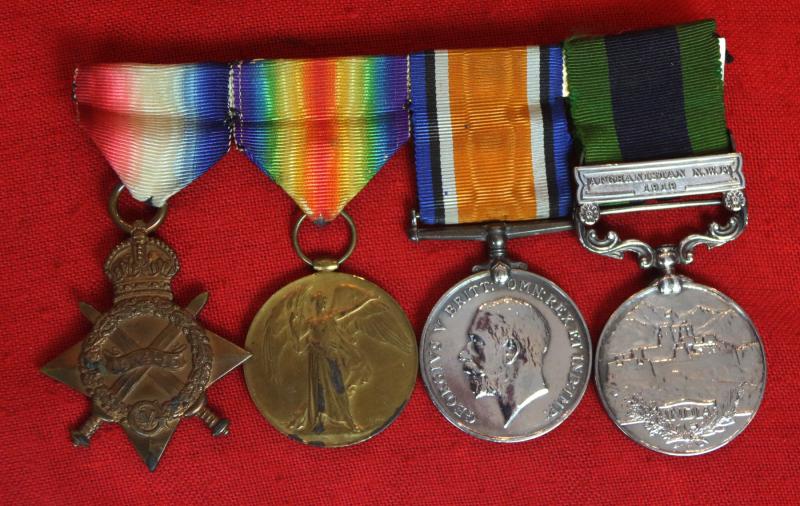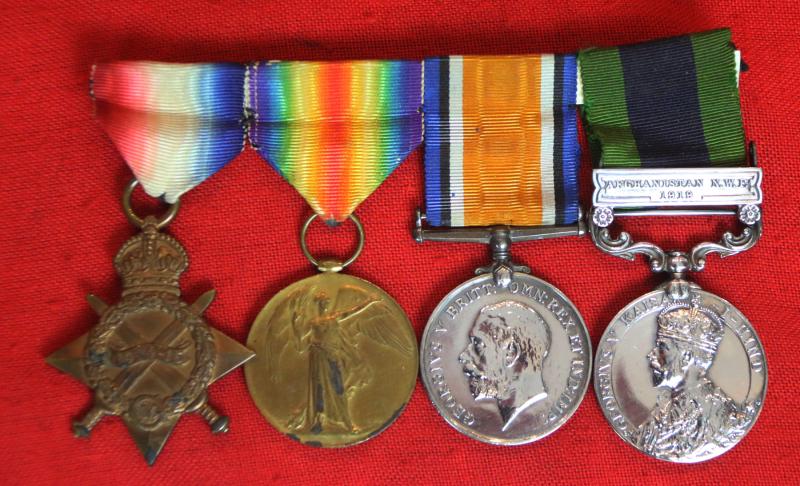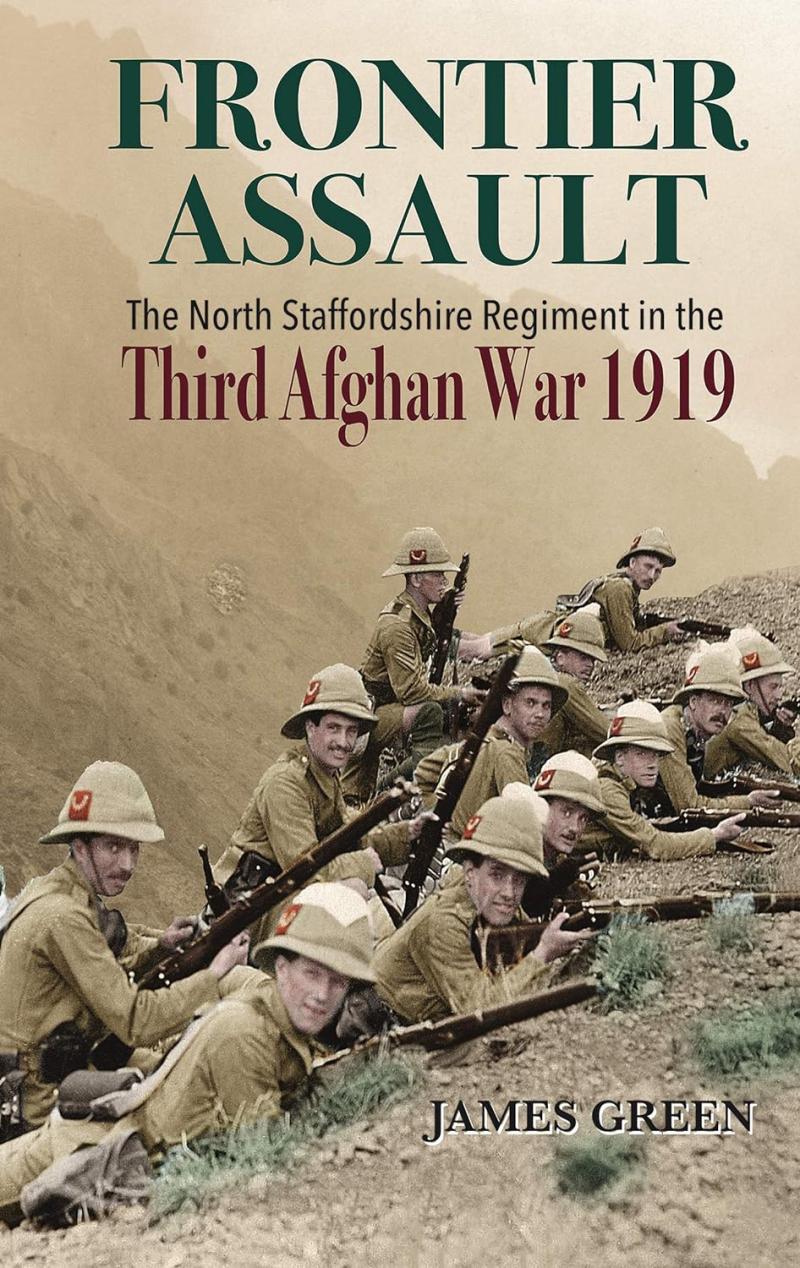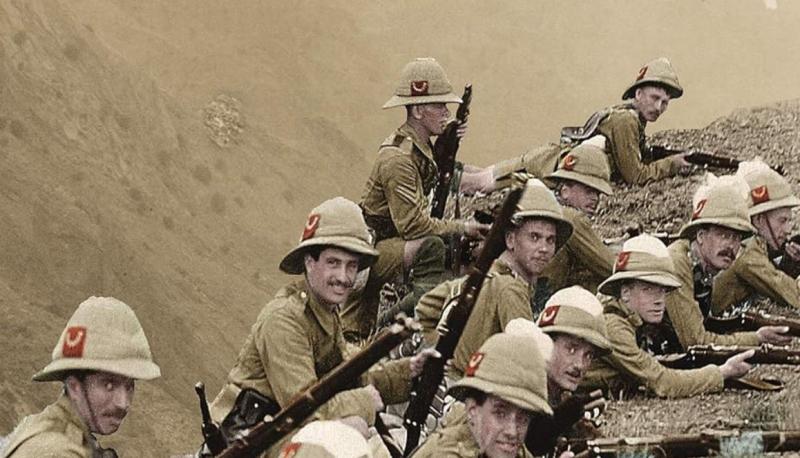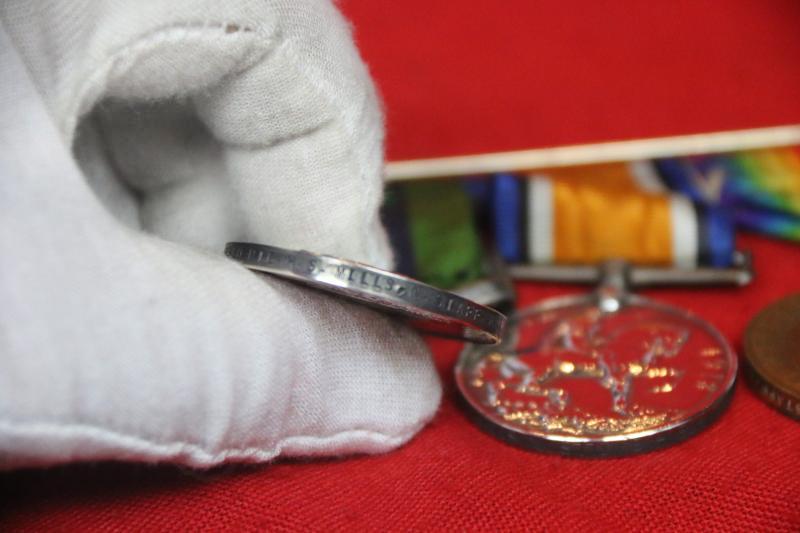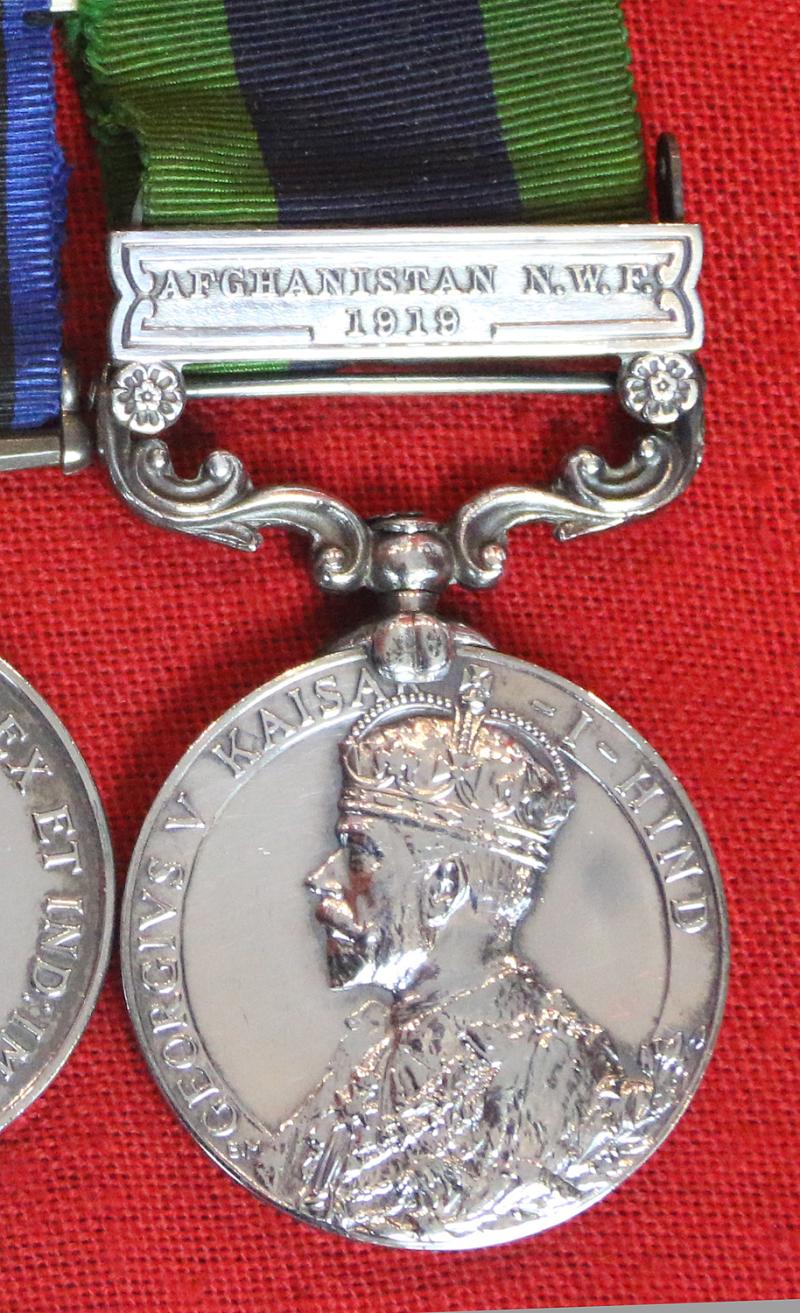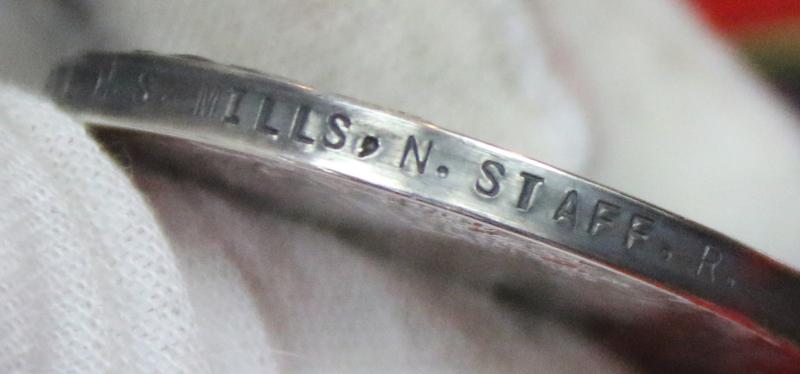A Superb Group of Four Medals WW1 Trio, and Third Afghan War, 1919 Afghanistan Bar, India General Service Medal
The North Staffordshire Regiment served with heroism and distinction in WW1, and the 2nd battalion served in Afghanistan after WW1 in 1919.
In May 1919, as the world recovered from the First World War, Afghanistan invaded British India. A daring move, the invasion took the British and Indian governments by surprise. To repel the Afghans, they launched a massive land and air campaign, mobilising a third of a million troops. Despite facing this military might, the Afghans - aided by the North-West Frontier tribes - almost won the war.
Frontier Assault tells the story of the Third Anglo-Afghan War through the eyes of the men who fought it. The North Staffordshire Regiment was one of the first units dispatched to halt the Afghan advance. They defeated the enemy vanguard in a tenacious mountain assault in the Khyber Pass. After, they led the British counter-attack into Afghanistan.
In WW1 the regiment were part of the Staffordshire Brigade,
Private Sidney Richards, who came from West Bromwich and had been employed as a clerk before the war, served with the Machine Gun Section of the. He recorded his experiences in his pocket diary:
2nd April Rifle inspection. Marched to trench at Messines. Took trenches over from 3rd Monmouths.
3rd April On look-out. Duty man in my trench had his brains blown out by a sniper. Raining very heavy.
4th April Raining heavy. Had no rations brought to us. Shortage of water. Up to our knees in mud.
5th April Simply awful. Raining all day and night. Shells bursting all over the shop. All I have to eat is 1 biscuit - would give a fortune for a dish of tea.
6th April More shells. Plenty of mud. Weather a little better. Relieved at 10 p.m. Got to camp 2 a.m. Wed.The threat posed by snipers was a constant feature of trench warfare. Initially at least, the units of the Brigade were woefully ill-equipped to conduct sniping from their own lines, as they had neither specialist rifles or telescopic sights. Several men had lucky escapes, such as Sergeant C. F. Rose, a soldier from Stone serving with the 1/5th North Staffords:
"I had a narrow shave of getting blinded in both eyes. I was looking at the German trenches through a periscope, when a German sniper hit the top glass with a bullet, and the glass falling in small pieces filled my eyes. I thought I had been shot, for it was sharp work for the eyes. I am getting on all right now, but have been pretty bad."
Captain William Millner of the 1/5th South Staffords also narrowly avoided being killed while sniping on 5th May. One of the best shots in the country at that time, Millner was an excellent candidate for the role. While observing German movements from the barn of one of the farms close to the front line, he too was wounded by an enemy sniper. The bullet hit the cap badge of his service dress cap and creased his skull. Luckily, his injury was not serious and after a brief period of recovery returned to his battalion.
German snipers were also quarry for the Staffords, patrols being sent out into "No-Man's Land" to hunt them down. Sergeant Sydney Norton, a member of "C" Company, 1/6th North Staffords, reported the results of one such patrol in a letter to his wife in Tamworth:
"...me and another Sergt. the day before found a sniper. We watched his antics for two hours and I placed the rifle at him, bowled him over the third shot and then got back to our trench. It's clinking sport like looking for game. They are very smart. We saw a dead cow in front of our trench. We fired a volley into it and the next day the Sergts. went out and found a dead sniper inside it, so you can tell the antics of war craft they get up to."
The last photo in the gallery is of Frontier Assault by James Green not included with group, just a suggestion. This might make a nice North Staffordshire Regt. Afghan War history book accompaniment for the medal
Code: 25071

